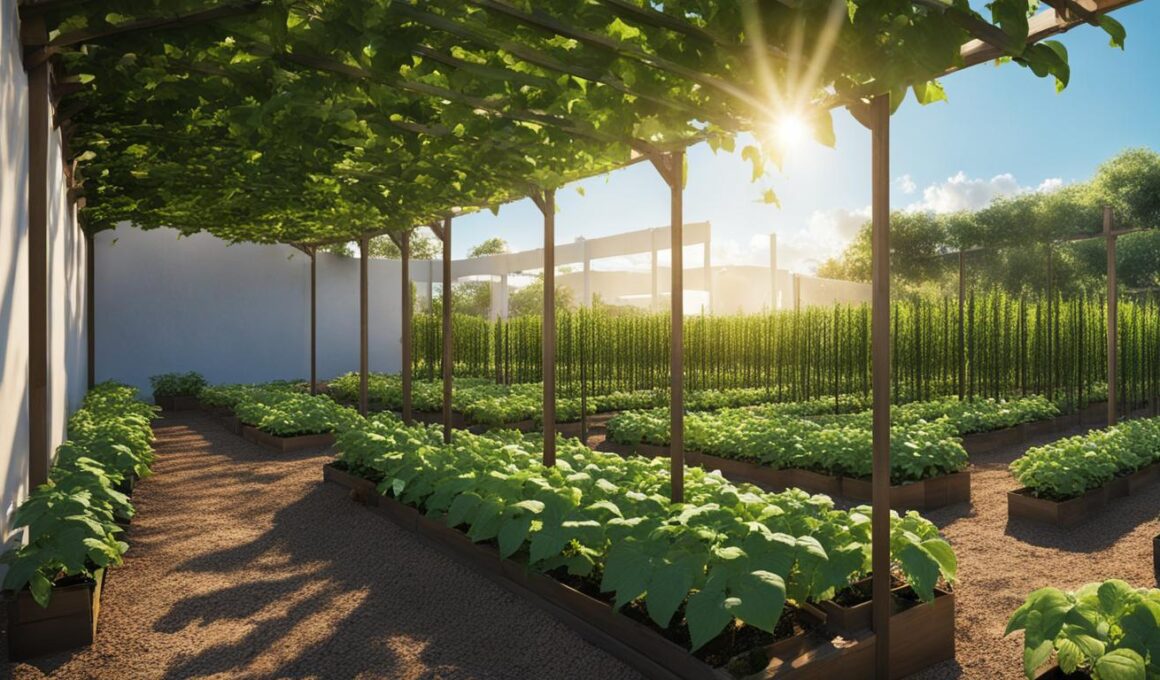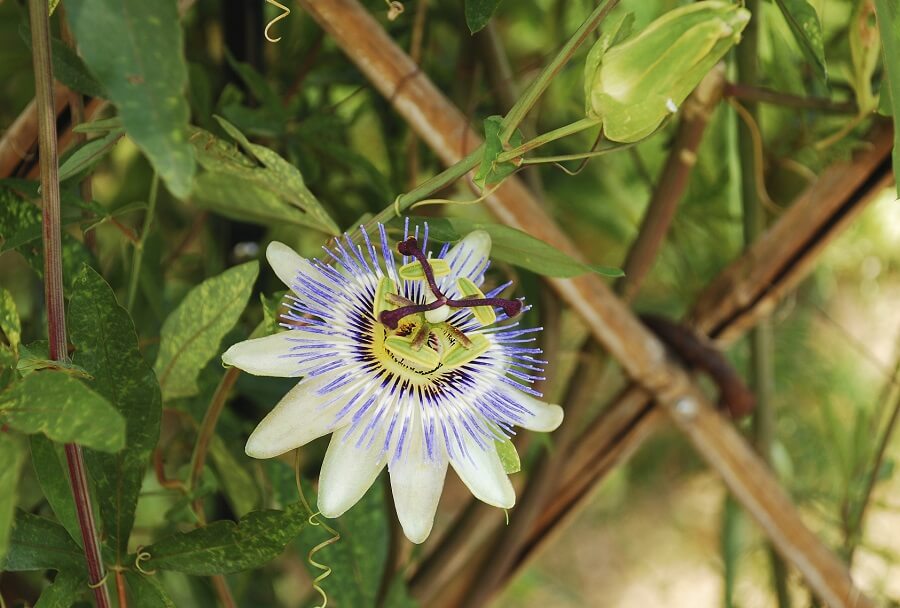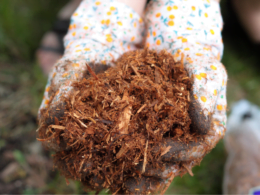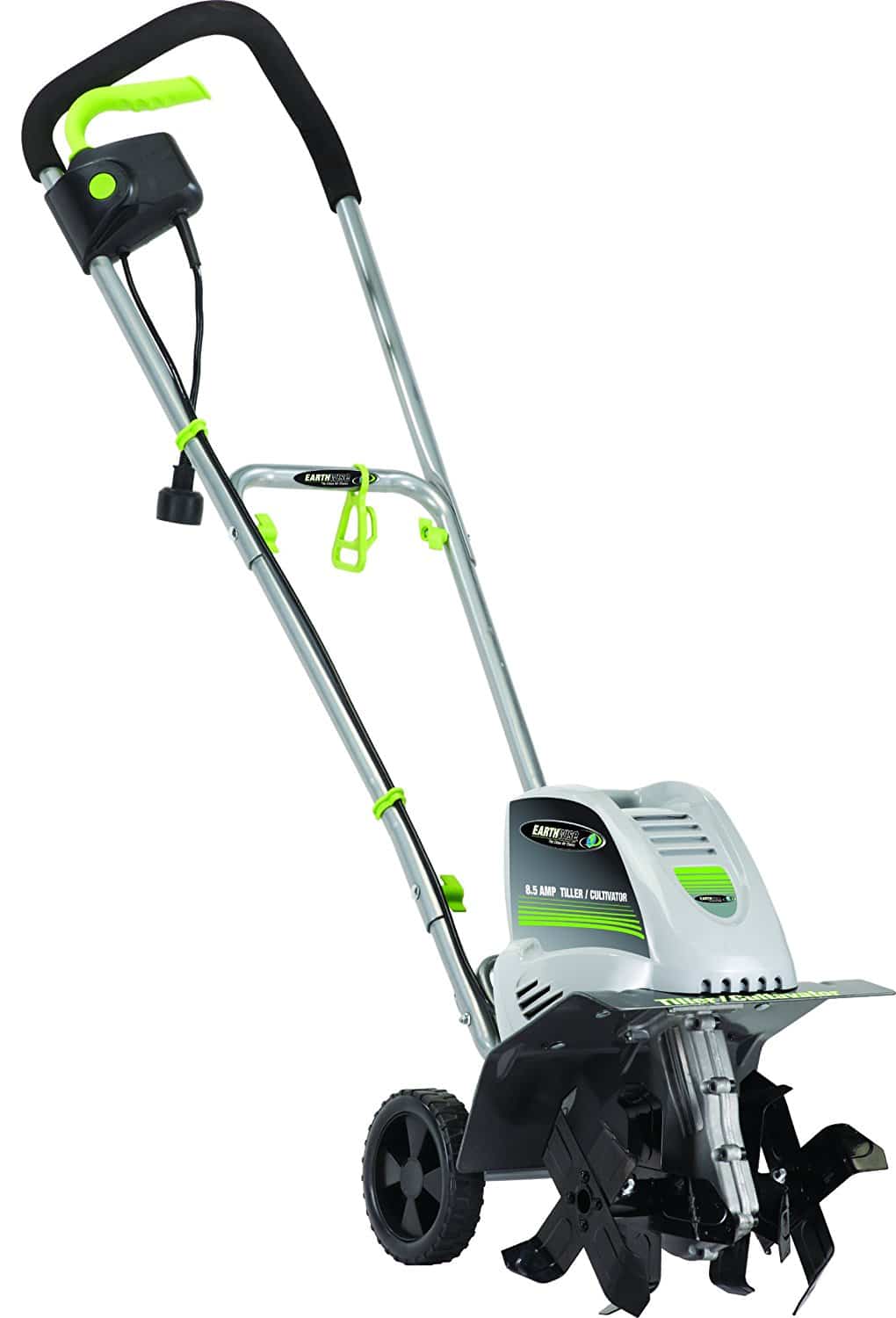When looking to grow bush beans in your garden, you may wonder if they need a trellis for support. The short answer is no – bush beans typically do not require trellises for support as they grow into a self-supporting compact bush shape. This makes them an ideal choice for gardeners who wish to can and freeze produce, as well as those with limited space or experience in gardening and cultivation.
Key Takeaways
- Bush beans do not typically require trellises for support.
- They are ideal for smaller garden beds and large gardens planted in double rows for easy mutual support.
- Planting bush beans is straightforward, with germination occurring within 10 days.
- Bush beans yield a harvest in about 3-4 weeks, offering an abundant crop within a short period.
- Though generally not needing trellises, some light support can be beneficial, especially when heavily laden with fruits.
Understanding the Basics of Bush Beans Cultivation
In this section, we will delve into the essentials of bush beans cultivation, exploring topics such as direct sowing, soil preparation for bush beans, seed sowing tips, and understanding the lifecycle of bush beans and their harvest timing. By the end of this section, you will have a thorough understanding of how to successfully grow bush beans in your garden.
Why Direct Sowing is Ideal for Bush Beans
Bush beans thrive best when seeds are sown directly into the garden soil. The tender and delicate roots of these plants are sensitive to transplanting, and direct sowing in the intended growth area eases sprouting and enhances growth potential as it minimizes root disturbance. Practicing direct sowing can result in stronger, healthier plants that yield a more abundant harvest.
Soil Preparation and Seed Sowing Tips for Optimal Growth
Preparing the soil properly before planting is crucial for bush beans’ optimal growth. Here are a few essential steps and seed sowing tips:
- Compost: Enrich the soil with organic matter such as compost to improve the soil structure, enhance water retention, and promote beneficial microorganisms that will aid in nutrient absorption.
- Mycorrhizae: Add mycorrhizal fungi to the planting holes to help plants establish a beneficial symbiotic relationship, which can lead to increased nutrient absorption and plant growth.
- Seed Sowing: Create one-inch deep holes with a dibber or fingers, spacing the seeds four to six inches apart for about four plants per square foot.
- Seed Soaking: Soak seeds overnight before planting to hasten sprouting and improve germination rates.
- Watering: After sowing, cover the seeds with loose soil and water until the soil is moist to facilitate germination.
The Lifecycle of Bush Beans and Harvest Timing
The lifecycle of bush beans from seed to harvest is a quick process, generally encompassing the following stages:
- Germination: Within ten days of sowing, seeds should germinate and sprout.
- Growth: From germination, plants will grow rapidly over a short period of about 3-4 weeks, producing an abundant harvest.
- Harvest: Harvest bush beans when they are firm, crisp, and slightly smaller than their maximum possible size for optimal flavor and tenderness.
- Continuous Harvest: To maintain a continuous supply of bush beans, plant more seeds every two weeks throughout the growing season, ensuring a steady yield.
Understanding the stages of bush beans cultivation, from sowing to harvest, enables successful garden planting and continuous harvest. By following the advice laid out in this section on direct sowing, soil preparation, and harvest timing, you will be well-equipped to grow bush beans that are healthy, productive, and delectable.
Comparative Analysis: Bush Beans vs. Pole Beans
Choosing the right type of bean for your garden largely depends on the available space and the desired harvest timeframe. In order to make an informed decision, it’s important to differentiate between bush beans and pole beans, two of the most popular bean varieties. In this section, we will focus on the key characteristics of these two bean types to help you determine which one is the best fit for your gardening needs.
Characteristics of Bush Beans
- Determinate growth: Bush beans exhibit a compact, bushy growth pattern that generally reaches only about two feet in height. This self-supporting plant does not typically require a trellis for optimal growth.
- Garden space efficiency: Due to their compact size and determinate growth habit, bush beans are suitable for smaller garden spaces and can be easily grown in raised beds or large gardens with double rows.
- Harvest timeframe: Bush beans produce a substantial harvest within a condensed time frame, typically within 3-4 weeks, making them ideal for canning and freezing due to the bulk harvest.
Characteristics of Pole Beans
- Climbing habit: Unlike bush beans, pole beans have a climbing growth habit and can reach heights of six feet or more. Due to their taller and vining structure, they require trellises or poles for support.
- Small space gardening: Pole beans are suitable for small-space gardening as they can be grown vertically on supports, providing an excellent solution for those with limited planting area.
- Prolonged harvest period: Pole beans have an extended harvest period that lasts about 6-8 weeks, allowing gardeners to enjoy a continuous supply of beans throughout the season.
| Characteristic | Bush Beans | Pole Beans |
|---|---|---|
| Growth Habit | Determinate, compact bush | Climbing, vining |
| Garden Space Efficiency | Excellent for small spaces and raised beds | Optimal for vertical gardening with limited planting area |
| Harvest Timeframe | Condensed (3-4 weeks) | Prolonged (6-8 weeks) |
| Trellis Support | Not required | Required |
In summary, bush beans are a great choice for gardeners who desire a compact, low-maintenance plant with a fast, abundant harvest, while pole beans would be a better option for those who are interested in a continuous supply of beans over a longer period and have a suitable vertical growing space. By understanding these key differences between bush and pole beans, you can tailor your garden to meet your specific requirements and maximize the efficiency of the available space.
The Benefits of Choosing Bush Beans for Your Garden
The space-efficient nature and ease of growth make bush beans a perfect choice for gardeners with limited space. Their compact size, determinate growth, and ability to produce bountiful yields within a short duration make them a popular choice for seasoned and beginner gardeners alike.
Space-Efficiency and Size Considerations
Bush beans are an excellent choice for space-efficient gardening due to their compact size, making them ideal for raised beds and small gardens. Their relatively small size also means that they can be planted in double rows to utilize garden space efficiently. The bush beans’ size and determinate growth habit allows gardeners to make the most out of limited spaces and still enjoy a satisfying and productive harvest.
Harvest and Yield Expectations for Bush Beans
When it comes to the Bush beans harvest, gardeners can expect substantial yields within a short timeframe (usually 3-4 weeks). Succession planting – sowing seeds every two to four weeks – can lead to a continuous harvest of bush beans throughout the growing period.
- Plant seeds every 2-4 weeks for a continuous harvest
- Expect sizable yields within 3-4 weeks of planting
- Yield expectations may vary based on growing conditions and bean varieties
By combining space-efficient gardening techniques like raised beds and double rows with a well-timed succession planting schedule, bush beans can offer consistent yields throughout the growing season.
Succession planting
allows gardeners to capitalize on the growing season by ensuring a steady and continuous supply of beans, making it an essential aspect of maximizing bush bean yields.
| Growth Habit | Size | Harvest Duration | Yield Expectations |
|---|---|---|---|
| Determinate | Compact | 3-4 weeks | Substantial (varies based on growing conditions and bean varieties) |
Ultimately, the space-efficient gardening approach and substantial yields offered by bush beans make them a highly beneficial choice for any gardener looking to optimize their garden space and enjoy a continuous harvest of delicious beans throughout the growing season.
Support Solutions: Are Trellises Necessary for Bush Beans?
While bush beans are known for their self-supporting growth habit, it’s natural for gardeners to wonder about the necessity of trellises or other supports for their plants. In general, bush beans do not require additional structures like trellises, as they do not grow as tall as pole bean varieties. However, there are some simple support solutions that can be beneficial for bush beans when they are heavily laden with fruits.
Bush Bean Support Methods:
- Proximity planting: Positioning bush bean plants close together or in pairs can offer mutual support when fruiting, as the plants lean on each other for stability.
- Double rows: Planting bush beans in double rows spaced about 12-18 inches apart allows plants to brace against one another as they grow, minimizing the need for external garden supports.
- Low stakes: Though not essential, using low stakes or small wooden sticks placed next to the main stem offers a little extra support for bush beans during heavy fruiting periods.
Pole beans, on the other hand, have a climbing habit and reach heights of up to six feet or more. This characteristic necessitates the use of trellises, poles, or other supports to accommodate their growth and ensure a successful harvest. While this may seem like a disadvantage, pole beans can be a space-saving option for gardens with limited horizontal space, as they utilize vertical space to grow and produce a lengthy harvest period of 6-8 weeks.
In conclusion, bush beans are a low-maintenance, space-efficient garden choice that does not usually require the use of trellises or other support structures. By following the suggested planting techniques and support methods, gardeners can enjoy a plentiful harvest of bush beans throughout the growing season.
Do I Need to Use a Trellis for Pole Beans in My Garden?
Yes, using a trellis for pole beans in your garden is advisable. It helps the best beans for garden to grow vertically, saving space and allowing for better air circulation. This reduces the risk of disease and makes harvesting easier. Overall, using a trellis is beneficial for pole beans in a garden.
Conclusion
In conclusion, bush beans have proven themselves to be a favored garden choice for many gardeners. This is largely due to their space-efficiency and ease of cultivation. They are an excellent option to consider as they are capable of thriving in various garden sizes and styles, making them a versatile addition to any vegetable garden.
When it comes to bean cultivation, the conclusion is clear: bush beans do not typically require a trellis, making them an excellent choice for gardeners looking for a trellis-free gardening method. While they may benefit from some light support, especially when heavily laden with fruits, the strategic planting of double rows will be sufficient for their growth and yield success.
As you plan your vegetable garden, be sure to consider bush beans as an integral part of your planting strategy. Their determinate growth and significant yield make them an ideal choice for any gardener, whether you are a novice or an experienced green thumb.











